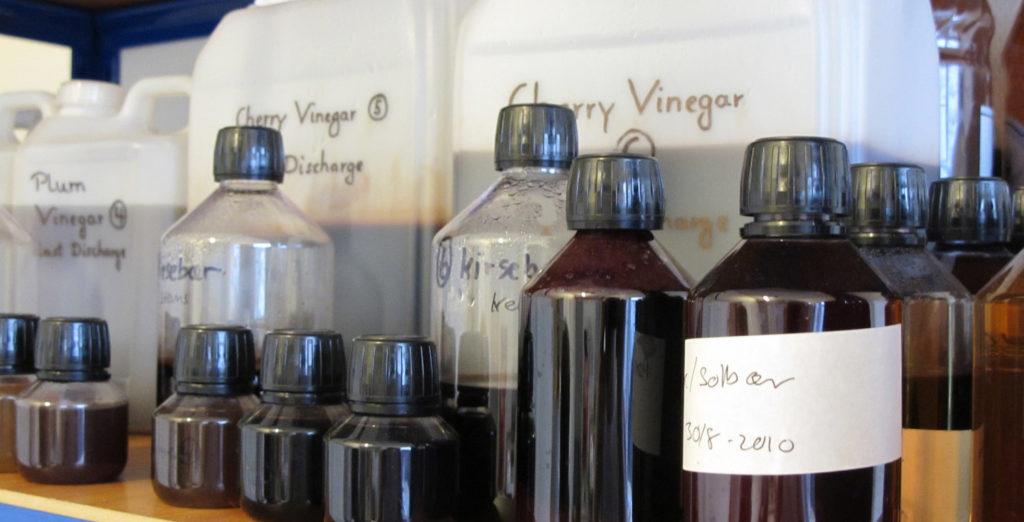by Ben Reade.

Making small quantities of things is a great way to experiment and find new ideas. When used to make vinegar, fruits such as plums, cherries, black currants or blackberries typically produce flavours which remind us of the original fruit. They can be used to add acidity, depth and sometimes sweetness to a huge array of dishes. Vinegars like this also have great scope for aging, as the years pass, the flavours develop and change in a very similar way to wine.
They build complexity and subtlety, at the same time becoming less harsh and ‘green’. Its very easy to make good vinegar, but it does take time. What you need is to ferment anything containing sugar (you can add it if you need to) using a yeast. This needs to happen in the absence of oxygen, so you need an airlock. Then the alcohol produced by the yeast can be converted into acetic acid (vinegar). To do this you need acetic acid bacteria, which, fortunately, are everywhere.
To make your alcohol into vinegar just add a quarter of the volume of a neutral and preferably unpasteurized vinegar and tie a piece of muslin over the open top. Leave this for a month or two in a warm place and hey presto, you have vinegar! Then it can be bottled and aged or consumed right there and then. If you age them, it will be a great opportunity to watch one of your own creations develop.
